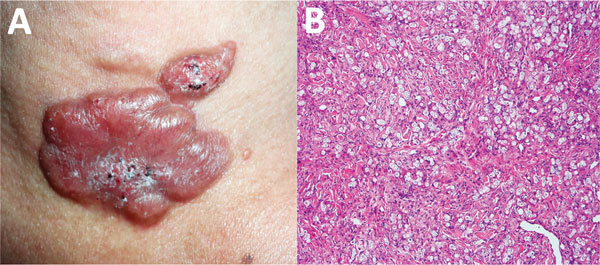A new study carried out by the Mycotic Diseases Branch at the Centers for Disease Control and Prevention in Atlanta, Georgia, US is dispelling some of the common myths around histoplasmosis in the US. Previous research has theorised that histoplasmosis is the most common endemic mycosis in the United States and that its distribution is […]
Retrospective study aims to quantify global burden of chromoblastomycosis
Chromoblastomycosis (CBM) is classed as a Neglected Tropical Disease and the global burden for this infection has never before been classified. This new study considers published literature from 1914 to 2020. Over this period, a total of 7,740 patients with CBM were identified on all continents except Antarctica. Of these cases the authors identified 4,022 […]
Reports of echinocandin-resistant Candida auris in healthcare settings
The Centers for Disease Control is calling Candida auris a ‘global emerging threat’. Pan-resistant C. auris isolates have been reported previously, although rarely, from the United States. Echinocandins are critical for treatment of C. auris infections and are recommended as first-line therapy for most invasive Candida infections, but the Antibiotic Resistance Laboratory Network has detected independent clusters of pan-resistant or echinocandin-resistant […]
Antifungal agents in biopolymer hydrogel wound dressing
A team from Wolverhampton, UK and Zabrze, Poland have made some interesting discoveries when using hydrogel as a method to administer antifungals within wound dressings. Wounds from various sources that have been in a prolonged state of irritation and rubor, with a high degree of exudate, are decidedly prone to becoming infected by various opportunistic […]
COVID-19 reverses gains in survival rates of HIV patients
Guatemala’s leading HIV centre reported that deaths from HIV rose from 16.6% to 27.3% during COVID-19. Just published in the International Journal of Infectious Diseases – Narda Medina and colleagues charted the provision of HIV care in Guatemala and how the global pandemic has affected diagnosis and treatment. Patient attendances and rapid services were also […]
Turkish review of mucormycosis in children shows high mortality rate and importance of urgent evaluation when infection is suspected
A new paper published by the Çukurova University Faculty of Medicine in Adana, Turkey, re-examines historical cases of mucormycosis in children. Mucormycosis is an emerging fungal infection with poor health outcomes. This infection is of particular interest due to its links to increased fatalities in the COVID-19 outbreak in India. This retrospective review focuses on […]
New Japanese study highlights improved diagnosis technique for tinea unguium
Fungi such as Cryptococcus, Histoplasma and Coccidiodes can survive antifungal therapy by residing asymptomatically in the prostate of immunocompromised patients, in some cases leading to relapse
Fungal prostatitis due to Cryptococcus and endemic mycoses
Fungi such as Cryptococcus, Histoplasma and Coccidiodes can survive antifungal therapy by residing asymptomatically in the prostate of immunocompromised patients, in some cases leading to relapse
Smoking appears to increase the risk of invasive fungal infections, particularly from dimorphic fungi
A meta-analysis by Pourbaix et al found a overall risk ratio of 1.41 when comparing risk of IFI in smokers to non-smokers, particularly for infections caused by dimorphic fungi such as histoplasmosis, blastomycosis and coccidioidomycosis
Skin biopsy distinguishes cutaneous leishmaniasis from lobomycosis in Colombian soldiers
Lobomycosis (AKA lacaziosis) is an implantation mycosis endemic to the Amazon basin, caused by Lacazia loboi. Nodular keloid lesions grow slowly and can cause disfigurement. Biopsy of lesions shows many thick-walled yeast cells forming chains, which may co-occur with other infections (e.g. leprosy, leishmaniasis) or squamous cell carcinoma.

